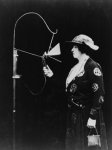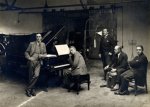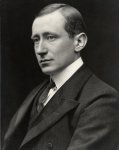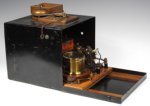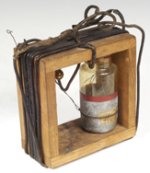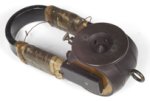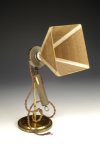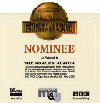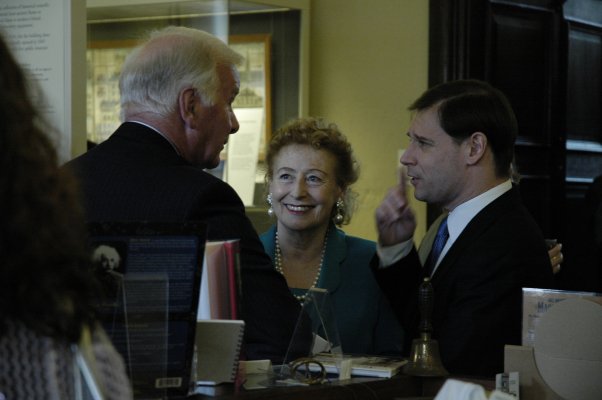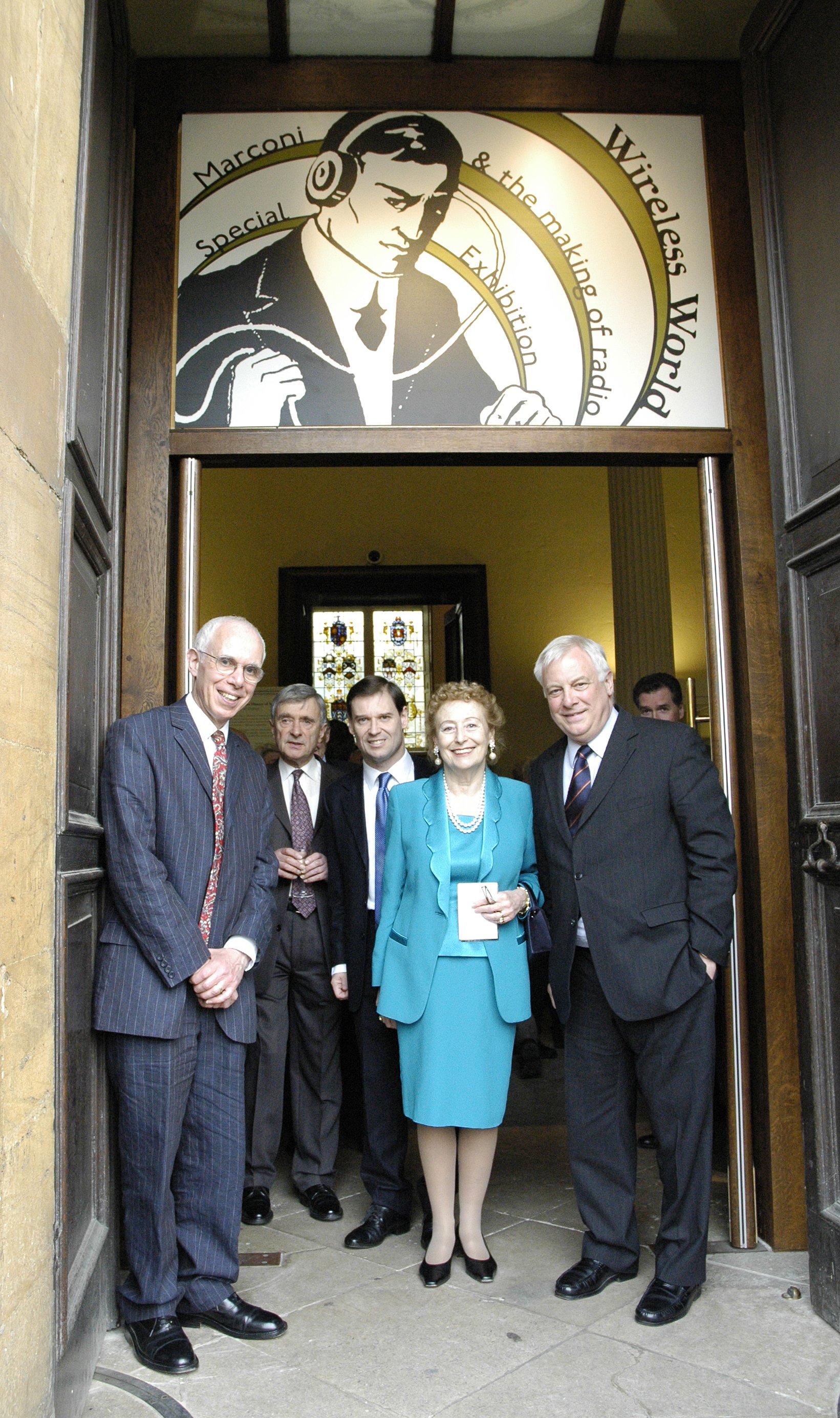 Museum of the History of Science
Museum of the History of Science
University of Oxford Press Pack for the Marconi Exhibition More detailed information on Marconi and the exhibition Technical information for specialist publications PRESS RELEASE Wireless World: Marconi and the making of radio
A special exhibition at the Museum of the History of Science to mark the acquisition by the Museum and the Bodleian Library of the extraordinary Marconi Collection. The exhibition covers the history of radio from Marconi’s early demonstrations in the 1890s to the beginning of regular public broadcasting in the 1920s. This is the story of a technology that has shaped the modern world. At first the major purpose for ‘wireless’ seemed to be for sending individual messages in Morse code, with much greater flexibility than the established telegraph system, which relied on connections by wires. ‘Wire-less’ would have military applications and would be especially valuable for communications at sea. However there was nothing to stop people ‘listening in’ and, with the coming of voice messages, enthusiasm grew for a completely different concept in communication - broadcasting. The exhibition concentrates on the dramatic and memorable events in the early story:
These are illustrated by original instruments and documents of outstanding interest, including:
Exhibition dates: 25 April to 1 October 2006 PRESS RELEASE SUPPLEMENT Wireless World: Marconi and the making of radio Detailed information for press use Introduction In 2004 the Marconi Collection was presented to the University of Oxford by the Marconi Corporation. This large and unrivalled archive of objects and documents records the work of Guglielmo Marconi and the wireless telegraph company he founded. The documents are kept in the Bodleian Library and the objects in the Museum of the History of Science. This exhibition of material from the collection presents the first decades of the history of radio (or ‘wireless’), from Marconi’s pioneering experiments and demonstrations at the end of the 19th century to the beginning of public radio broadcasting in the 1920s. Wireless transformed the modern world. At first it was a means of individual communication, for sending telegraphic messages in Morse code without the need for connecting cables, hence the name ‘wire-less’. Two decades later radio signals were also being ‘broadcast’. Radio was entering the home, bringing information and entertainment, and anyone could ‘listen in’. The commonly used expression ‘listening in’ perfectly captured the shift from private and individual communication to public broadcasting accessible to everyone. Marconi arrivesMarconi began his research on radio waves while at home in Bologna, inspired by the possibilities he saw in the work of early pioneers such as Heinrich Hertz, Augusto Righi and Oliver Lodge. He brought his vision and his enthusiasm to England in 1896, in search of support and commercial application, and in the same year applied for a patent for a system of wireless telegraphy. Having demonstrated his system to the Navy, Army and representatives of the Post Office in trials on Salisbury Plain, Marconi arranged a demonstration to accompany a public lecture on telegraphy by William Preece, chief engineer to the General Post Office. This was held in Toynbee Hall, the educational and charitable institution in London’s East End, in December 1896. Preece operated the transmitter and whenever he created an electric spark, a bell rang on a box Marconi took to any part of the lecture room. There was no visible connection between the two. The demonstration caused a sensation and made Marconi a celebrity. Seaside trialsIn the final years of the 19th century Marconi worked to extend the range of his radio signals and to demonstrate their practical value. He established stations on the south coast and the Isle of Wight, successfully exchanged signals with ships at sea and in March 1899 transmitted the first wireless message across the English Channel. He had not neglected the commercial side, establishing a factory in Chelmsford in December 1898. Once he went beyond simple demonstrations of radio transmission and reception, Marconi had to tackle the problem of interference between signals. The answer was ‘tuning’ - the ability to transmit waves of a particular frequency and to adjust the receiver to accept one frequency at a time. 7777Marconi’s method of separating signals through ‘tuning’ was granted a patent in April 1900 and by good fortune happened to be allocated a striking and memorable number: 7777. This helped to establish the fame of the ‘Four Sevens’ patent. Marconi had hired the electrical engineer and Professor at University College London, John Ambrose Fleming. His subsequent work on thermionic valves would be crucial to the further development of radio Atlantic crossingMarconi’s most audacious early ambition was to send a radio signal across the Atlantic. It was generally believed that the curvature of the earth made this impossible, since the waves were expected to travel in straight lines and could not pass through the earth. Two wireless stations were set up in 1901: a transmitter of unprecedented power at Poldhu in Cornwall and a receiving station at St John’s in Newfoundland, where the aerial was to be raised by a balloon or a kite. Marconi and his assistants George Kemp and Percy Paget arrived in Newfoundland in December and, although the balloons failed and one of the kites was blown away, after an anxious wait they finally detected the pre-arranged signal from Poldhu. On 12 December they heard the three dots - the letter ‘S‘ in Morse - on a telephone wired in series with a sensitive detector. The signal had been too weak to be printed on tape in the way telegraphic messages were usually recorded, which led to problems in convincing everyone that the trial had succeeded. Two month’s later, however, signals were successfully transmitted over 2,000 miles to Marconi on board the Philadelphia, leaving no room for doubt. ApplicationsThe first decade of the 20th century saw the beginnings of the serious practical uses of wireless telegraphy. Early success came in areas where the value of speedy communication was already appreciated, such as in the military and especially at sea. The advantages of wireless for maritime use were obvious and had been appreciated by Marconi from a very early stage. His ambitions in this direction are evident from the formation of a subsidiary company, the Marconi International Marine Communication Company, in 1900. TitanicThe value of wireless communication at sea was dramatically demonstrated by the Titanic disaster in April 1912. Large ships were now being fitted with wireless sets and at least one operator was included among the crew. Titanic had two operators and the latest and most powerful equipment from the Marconi company. After she struck an iceberg and was holed below the water and sinking, the operators were able to send out distress calls to nearby ships and to receive word of their plans to assist. Marconi was celebrated as the saviour of the 700 people who were rescued from Titanic. Some of the most remarkable and compelling material in the Marconi archive is the original documentary record of this influential and memorable episode in the history of wireless telegraphy. Much of the material in the two showcases on Titanic is being shown in public for the first time Titanic aftermathThe two Marconi operators on board Titanic were Jack Phillips and Harold Bride. Their first distress message was sent out at 00.05 hours (ship’s time) on 15 April (about 25 minutes after the ship struck the iceberg), after which they were continuously occupied in emergency communications until loss of power to their equipment meant they could do no more. Both then abandoned ship, shortly before it foundered at 02.20 hours. Phillips, the senior operator, was lost, but Bride was picked up by Carpathia, where he assisted the sole radio operator in dealing with a constant exchange of messages in the following hours. The Carpathia finally docked at New York on 18 April and Marconi visited his exhausted operators on board. He had recently arrived there himself on the Lusitania, having at a late stage changed his original plan to cross the Atlantic on Titanic. World War OneIt was obvious from the outbreak of World War I in 1914 that wireless had become a technology of great strategic importance. The British government immediately took control of parts of the Marconi company, such as its latest transatlantic stations in Wales and its factory in Chelmsford, and the company established an ambitious training programme for wireless operators. While government restrictions meant that public developments were suspended, the demands of war - from land, sea and airborne services - meant that other technical developments were accelerated. Wartime priorities emphasised the potential for counter-offensive inherent in wireless communication - signals could be intercepted, for example, and direction-finding techniques could locate the positions of enemy transmitters. Once it was possible to locate trench wireless sets, enemy troop positions could also be known, as well as Zeppelins and other hostile aircraft. It was detection of wireless traffic that alerted the British navy to the movements of the German fleet and precipitated the Battle of Jutland in May 1916. Wireless at seaWireless services became increasingly sophisticated as technology developed. Ocean newspapers originated as early as 1899, when Marconi, sailing from the United States on the liner St Paul, produced a single sheet of news derived from wireless messages, for the benefit of passengers as the liner neared Britain. In subsequent years, with increasing range, news was conveyed to ships at more distant positions and incorporated into pre-printed newspapers containing more general articles. BroadcastingTechniques for using wireless technology to transmit speech, instead of Morse signals, began to be developed before World War I. But it was after the war that amateur radio became increasingly popular and simple radio receiver sets were developed for a rapidly expanding market. This meant that wireless could be used for ‘broadcasting’ as well as for sending targeted messages. Marconi’s company pioneered regular broadcasts of information and entertainment in Britain. It organised the first ever broadcast of live public entertainment, by the famous Australian soprano Dame Nellie Melba from the company’s Chelmsford works in 1920. Subsequently it set up broadcasting stations at Writtle in Chelmsford and at Marconi House in London in 1922. Strict regulation was enforced by the Post Office, as the licensing authority for broadcasting. But the increasing clamour for licenses from several organisations resulted in their coming together as the British Broadcasting Company (later ‘Corporation’) in December 1922. The era of popular broadcasting for the home - first by radio, later by television - had begun. PRESS RELEASE SUPPLEMENT Wireless World: Marconi and the making of radio Information for the technical press
The exhibition has two main purposes: to celebrate the presentation of the Marconi Collection to the University of Oxford, and to demonstrate the development of wireless radio in relation to Marconi - from his early demonstrations on Salisbury Plain in 1896 through to the development of public broadcasting in the early 1920s. The exhibition uses a number of unique objects and documents relating to the early history of radio, some of which are on public display for the first time. The overall narrative of this exhibition is divided into four chronological time periods sections. The first section explores Marconi’s early experiments and development with wireless. Objects displayed in this section include a Grasshopper Send-Receive Morse Key (c. 1899) as used in early wireless experiments, Marconi’s Parabolic Transmitter and Receiver (1896) from his demonstrations on Salisbury Plain, Marconi’s Tuned Transmitter (1899) as used for the basis of his famous ‘7777’ patent, and an early experimental Fleming valve (c. 1889). Documents include the first commercial wireless message as sent by Lord Kelvin, and sections of the diary and notebooks of G. S. Kemp, Marconi’s technical assistant. The later part of this section deals with Marconi’s 1901 transatlantic transmissions and includes the receiver, Billi condenser, self-restoring coherer, and signal kite used in this historical event. The second section investigates the applications and use of early Marconi radio technology. Objects in this section include the first portable wireless transmitter used in the British Army (1907), and a Marconi Crystal Receiver Type 31C (1910). A major subsection explores the dramatic involvement of wireless telegraphy in the Titanic disaster and includes a number of key wireless messages. The third section deals with the use of Marconi radio in the First World War. Objects include a Marconi Crystal Receiver Type 16 (1916), a Forward Spark ‘B’ Wavemeter (c. 1918), and a Marconi Bellini-Tosi Direction Finder (c. 1916). Documents include an intercepted message announcing the outbreak of the war, and a Zeppelin tracking chart from 1916. The fourth and concluding section explores the birth of public broadcasting and includes a number of unique and exciting radio sets relating to this dramatic development in the history of radio. These include a Marconi Crystal Junior Receiver Type RB2 (1922), a Marconiphone Universal Baby Crystal Receiver (c. 1924), and a Marconiphone Two-Valve Receiver Type V2 (1923). Also included is the Telephone Microphone No 100L (1920) used and signed by Dame Melba broadcast during her historic broadcast from Chelmsford on 15 June 1920. This exhibition is sure to excite and entertain any individual with even a passing interest in the history of radio and is a must-see for any radio enthusiast. Images and captions This section contains high resolution images suitable for print (TIFF) and web (JPEG) publishing. To download the image you want, using a Windows computer, you should right-click on one of the download links and choose 'Save link as...', or with an Apple Mac, you should 'control'-click on one of the links and choose 'Save link as...' or 'Download link to disk', depending on the web browser you are using.
Download Press Pack documents Download the Press Release and related documents from this section. All of the files are in Microsoft Word document format
Opening day photographs A selection of photographs from the opening day of the Marconi exhibition:
|



